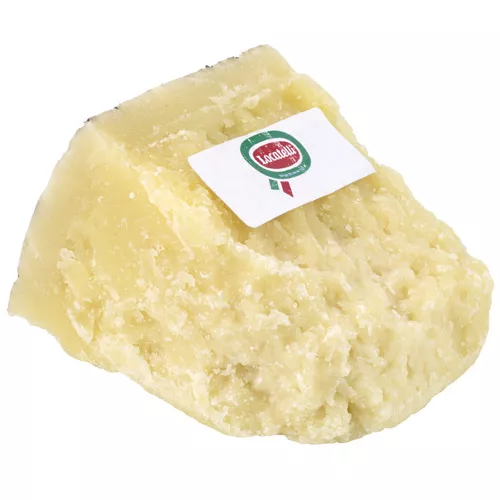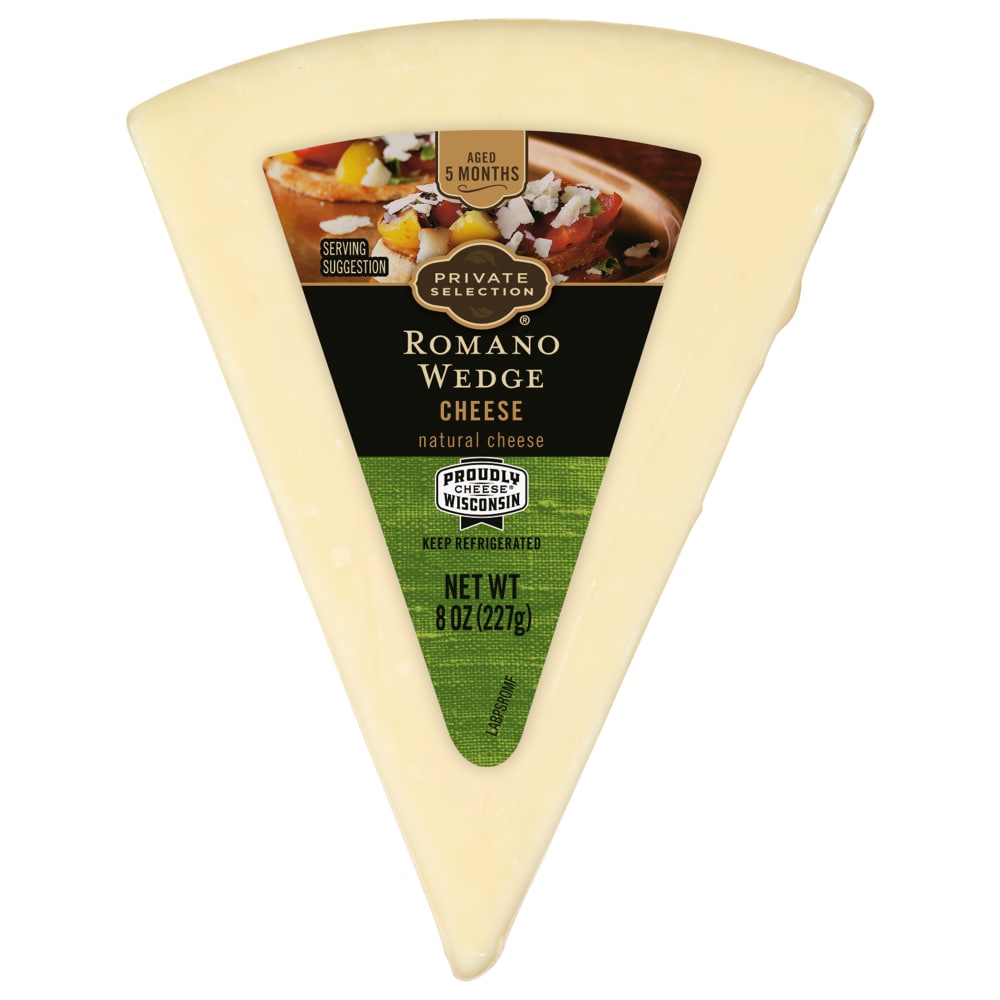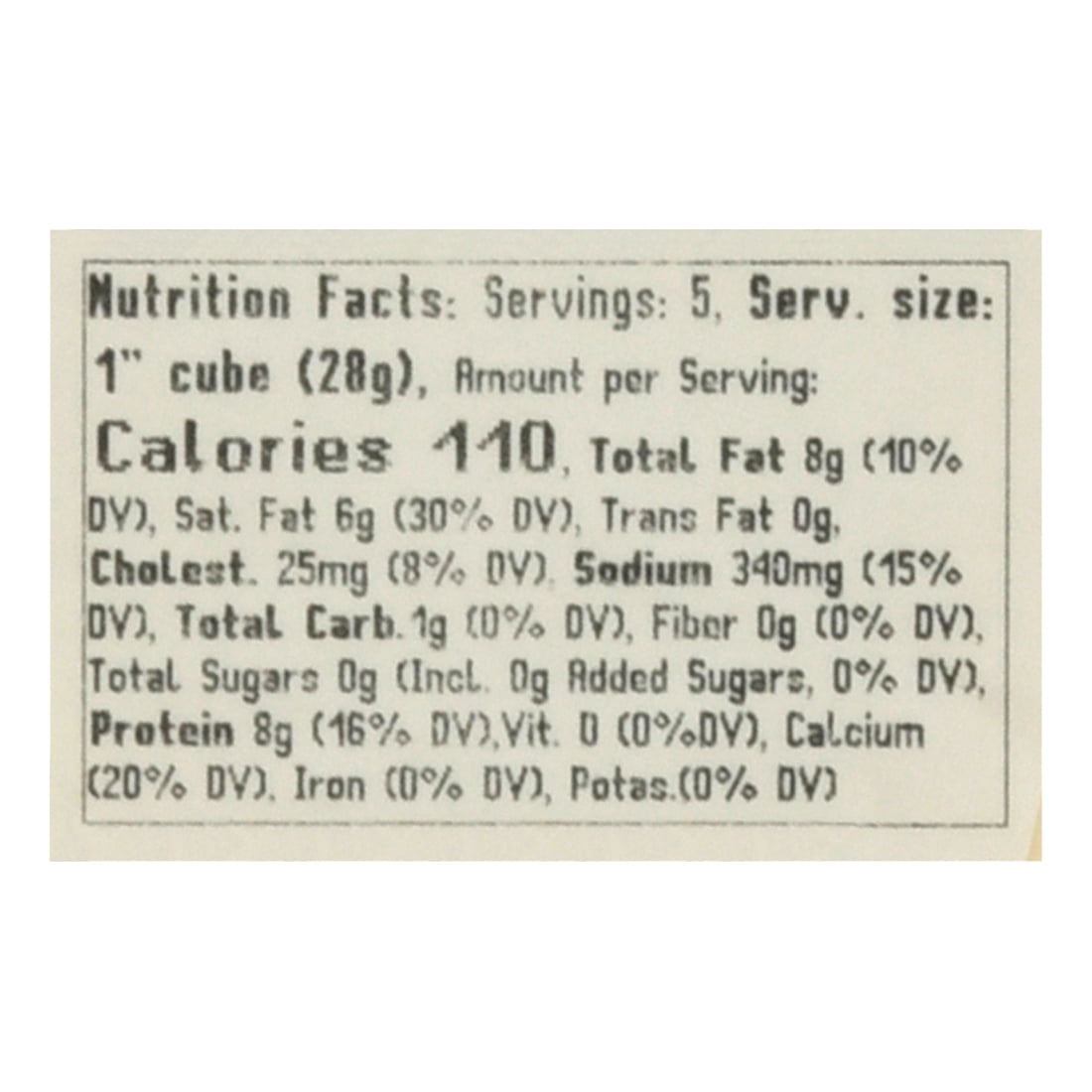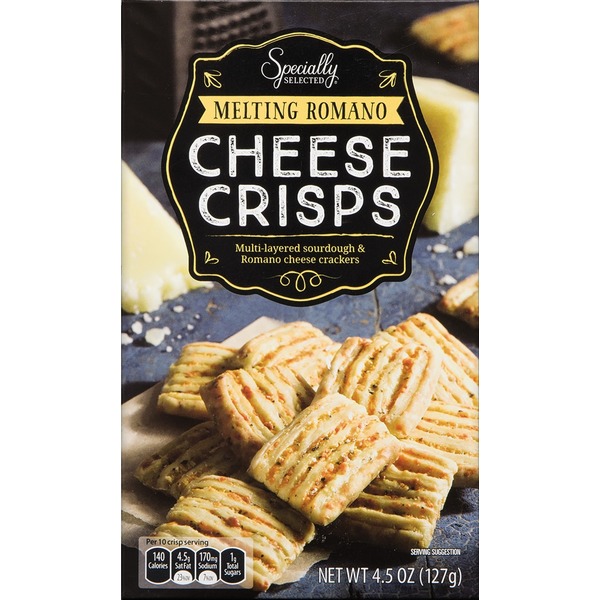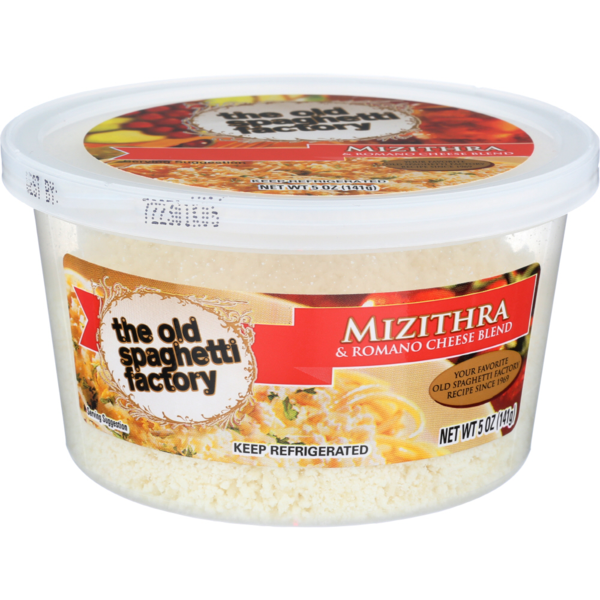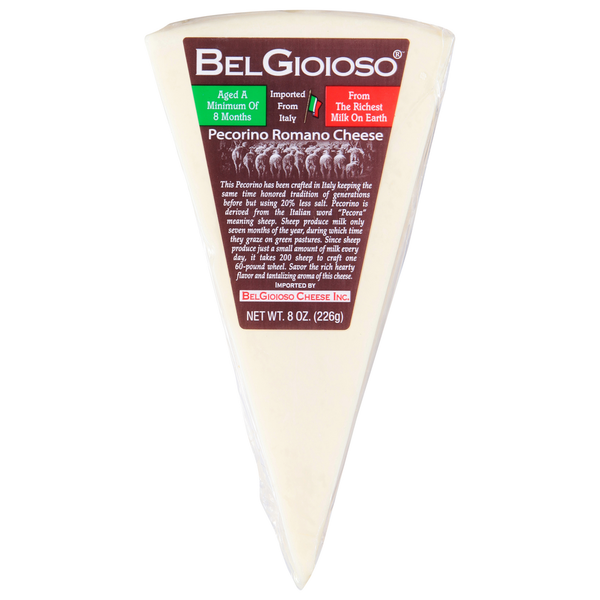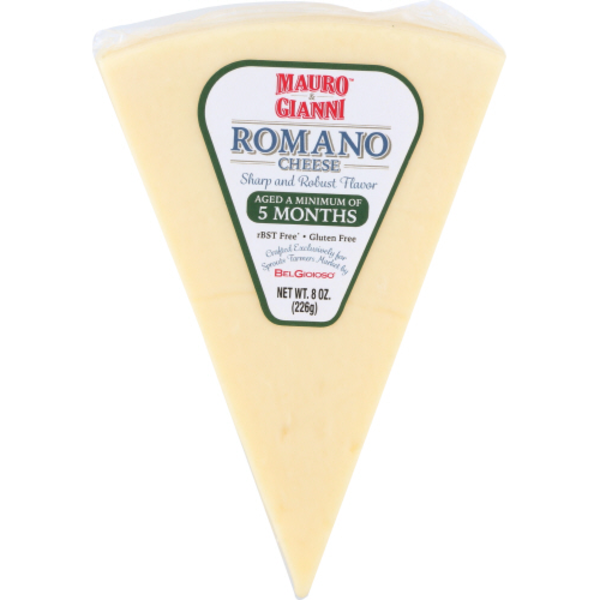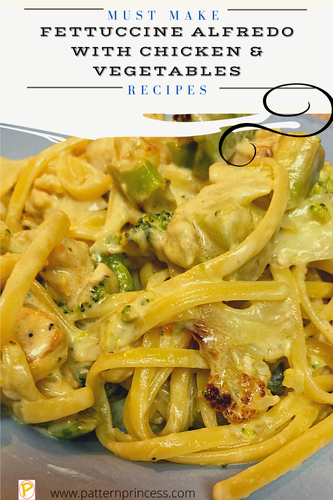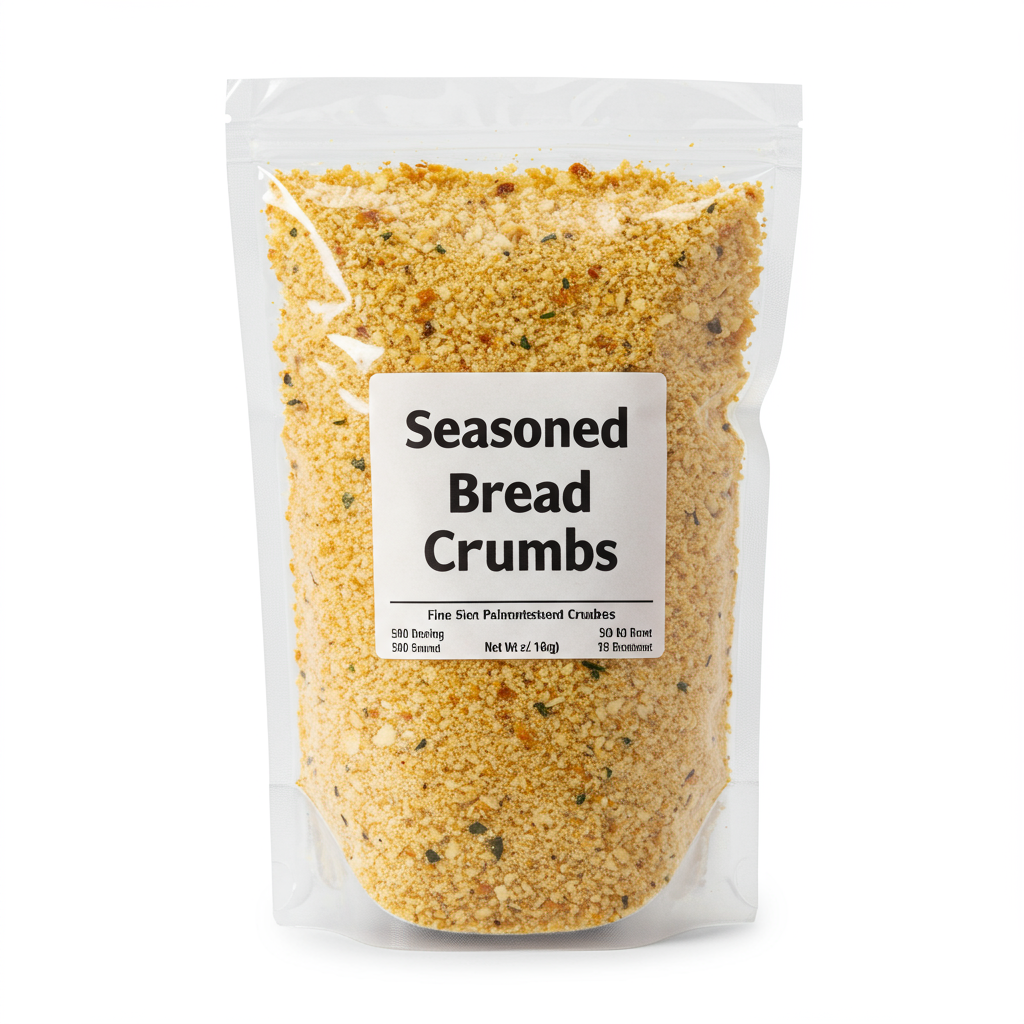Romano Cheese
Romano cheese is a hard, granular, and salty Italian cheese traditionally made from sheep's milk, often used for grating. Named after the city of Rome, its production dates back over two millennia. Today, however, variants made from cow's milk (Vacchino Romano) and goat's milk (Caprino Romano) are also available, offering slightly different flavors and textures. Pecorino Romano is the most famous and authentic variety, produced primarily in the regions of Lazio, Sardinia, and Tuscany.
Often compared to the more common Parmesan cheese, Romano has a more robust and tangy taste, making it a popular choice for various Italian pasta dishes, including cacio e pepe and carbonara. It also pairs well with meats, vegetables, and salads. Romano can be stored in the refrigerator for up to six months, and its rich umami notes make it an excellent addition to an antipasto platter or cheese board.
6%
CARBS
43%
FAT
51%
PROTEIN
164 Romano Cheese Products
BelGioioso Romano Cheese Wedge, Specialty Hard Cheese
Locatelli Pecorino Romano Cheese
Private Selection® Romano Wedge Cheese
Bel Gioioso Belgio Romano Wedge
Private Selection Romano Wedge Cheese
Specially Selected Cheese Crisp Melting Romano
BelGioioso Freshly Shredded Romano Cheese, Cup
The Old Spaghetti Factory Mizithra & Romano Cheese Blend
BelGioioso Pecorino Romano Cheese, Wedge
Mauro Gianni Romano Cheese Wedge
Used In 12 Recipes
4
Crispy Cheesy Italian Chicken Cutlets
Cheesy Herbed Chicken Rolls with Homemade Savory Seasoning
2
Bucatini with Zesty Tomato-Ricotta Pesto and Balsamic Glazed Cherry Tomatoes
3
Bucatini Pesto Pasta with Lemon Infused Crumbs & Burst Cherry Tomatoes
2
Hearty Italian Cabbage Stew
45
Lasagna Roll Ups
2
Mom's Best BLT Caesar Salad Recipe
2
Fettuccine Alfredo with Chicken and Vegetables
Romano Cheese Is Frequently Used With
Romano Cheese FAQ
Cooking with Romano cheese can be a delightful culinary experience. However, one most common stumbling block that cooks face is using too much of it due to its robust and tangy flavor. Unlike milder cheeses, the strong taste of Romano cheese can easily dominate the flavor profile of a dish if not used sparingly. To get the most out of this ingredient, try using less than you think you'll need, and then add more to taste if needed. A little really does go a long way with this cheese!
Another issue people face is confusion between different types of Romano cheese. There are three major varieties (Pecorino Romano, Caprino Romano, and Vacchino Romano), each made with milk from different animals (sheep, goat, and cow, respectively) and each with its distinctive taste. Knowing and understanding these varieties can significantly influence the taste of your dishes.
A valuable trick to enrich the flavor of your dish is grating the Romano cheese right before use, making it taste fresher. You can also experiment using it in non-Italian dishes, like stews or roasted vegetables, to give them an unexpected twist.
Keeping your fingers away from fresh Romano cheese is also highly recommended. Using a cheese grater or knife helps avoid prematurely warming the cheese and altering its taste and consistency.
What can Romano cheese be used for?
Does Romano cheese melt well?
Can Romano cheese be eaten raw?
What's a good substitute for Romano cheese?
What's the difference between Pecorino Romano and Parmesan?
Is Romano cheese lactose-free?
Can I use Romano cheese instead of Parmesan in Alfredo sauce?
Can I use Romano cheese in lasagna?
What does Romano cheese pair well with?
Can I use Romano cheese in mac and cheese?
Expiration & Storage Tips
When does romano cheese expire?
When stored properly, Romano cheese lasts for about 7 to 9 months unopened in the refrigerator, depending on the sell-by date. Once opened, it's best to use it within 3 to 4 weeks. If you've grated the cheese, then try to use it up within 5 to 7 days. Throwing the cheese in the freezer extends its life considerably, allowing it to last about 6 to 8 months, though there may be some changes to texture after thawing.
How do you tell if romano cheese is bad?
If your Romano cheese develops an off odor, flavor or appearance, toss it out - quality is likely compromised. Mold can grow on the surface of the cheese, showcasing colors like blue, green, white or even black. If you notice any mold, it's time to say goodbye to your cheese. Don't be tempted to cut the mold off and eat the rest, as the mold can also produce harmful toxins and bacteria.
Tips for storing romano cheese to extend shelf life
• Store your Romano cheese in the fridge, ideally between 35°F and 40°F.
• Wrap your cheese in wax paper, then place it in a plastic bag. The wax paper preserves the cheese's moisture level without causing it to dry out or soften too much. The bag will help prevent cheese odors from spreading to other fridge occupants.
• If freezing, grate your Romano cheese first, then store it in an airtight container or freezer bag. Thaw in the fridge before use.
• Don't store cheese with other strong-smelling foods. As a cheese breathes, it can absorb other odors and change its flavor.
• Lastly, always remember to rewrap your cheese with fresh paper if the cheese is getting sweaty and wet.
EXPIRES WITHIN
8 - 13
MONTHS
Equivalents
Substitutes

Parmesan Cheese

Piave Cheese

Shredded Parmesan Cheese

Grana Padano Cheese
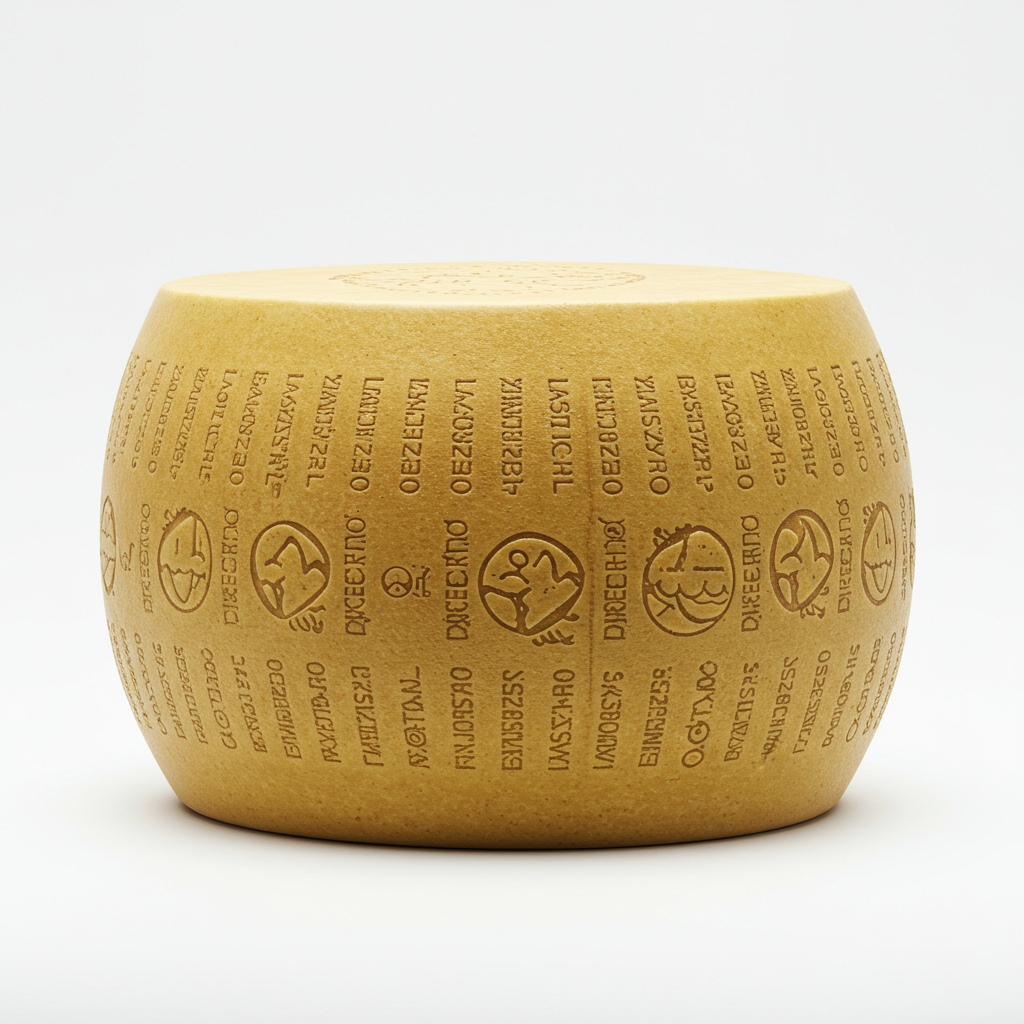
Parmigiano Reggiano Cheese

Shaved Parmesan Cheese

Shredded Pecorino Romano Cheese
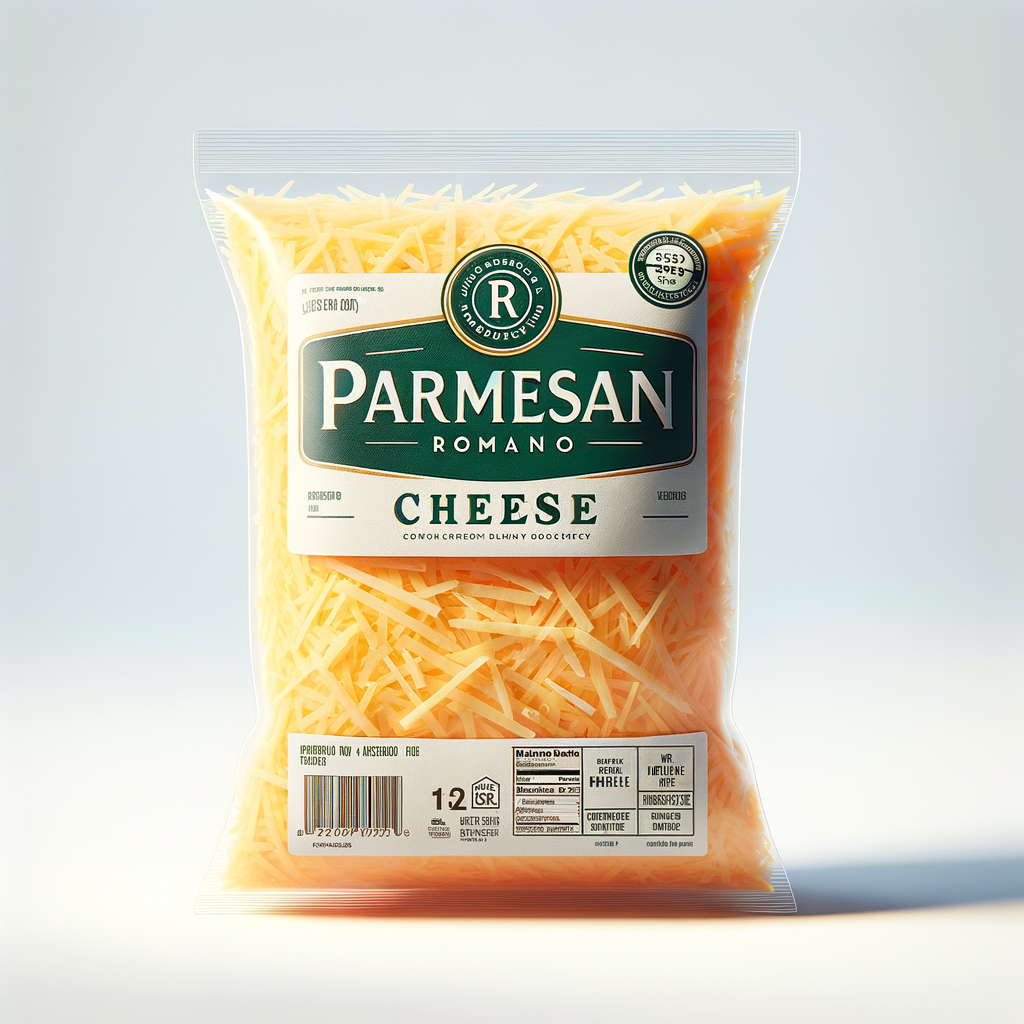
Shredded Parmesan Romano Cheese
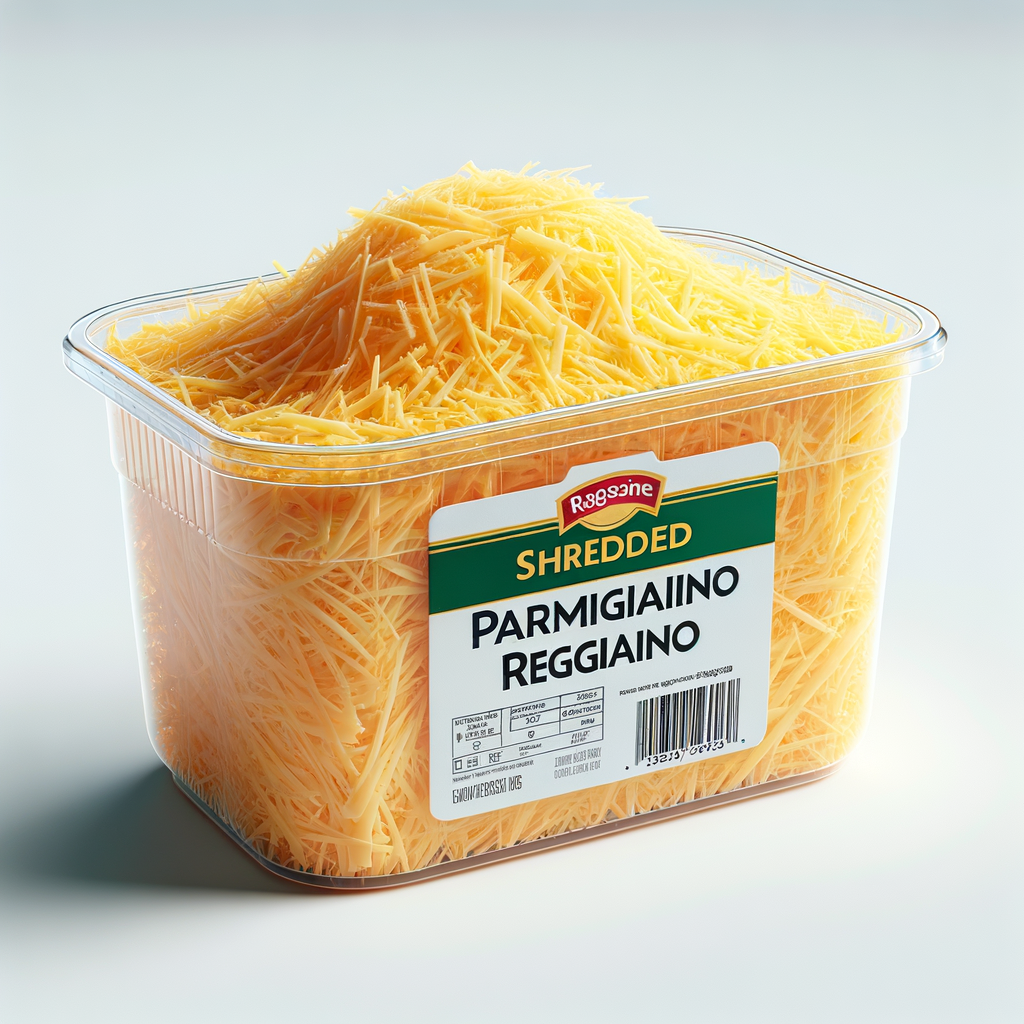
Shredded Parmigiano Reggiano Cheese

Grated Parmesan Cheese
See All
Health Info
Macros
1g
CARBS
7g
FAT
8g
PROTEIN
Allowed on these diets
LOW FAT
HIGH CALCIUM
VEGETARIAN
KETO
MEDITERRANEAN
LOW CARB
GLUTEN FREE
Contains these allergens
MILK


